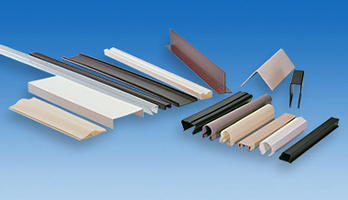Cutting-edge technology in plastic extrusion for innovative industries
Cutting-edge technology in plastic extrusion for innovative industries
Blog Article
Recognizing the Essentials and Applications of Plastic Extrusion in Modern Manufacturing
In the world of contemporary production, the strategy of plastic extrusion plays a crucial role. Untangling the basics of this process reveals the true adaptability and capacity of plastic extrusion.
The Basics of Plastic Extrusion Process
While it might appear facility, the fundamentals of the plastic extrusion process are based upon fairly straightforward principles. It is a production procedure where plastic is melted and afterwards formed into a continuous account with a die. The raw plastic product, frequently in the form of pellets, is fed into an extruder. Inside the extruder, the plastic goes through heat and pressure, triggering it to melt. The molten plastic is after that compelled via a shaped opening, recognized as a die, to develop a long, constant item. The extruded item is cooled down and after that reduced to the desired length. The plastic extrusion process is extensively used in various industries because of its effectiveness, convenience, and cost-effectiveness.
Various Types of Plastic Extrusion Methods
Building upon the fundamental understanding of the plastic extrusion process, it is required to discover the various strategies associated with this production approach. Both primary strategies are profile extrusion and sheet extrusion. In account extrusion, plastic is thawed and developed into a constant profile, commonly made use of to develop pipes, rods, rails, and home window frames. On the other hand, sheet extrusion produces huge, flat sheets of plastic, which are typically additional processed right into items such as food packaging, shower drapes, and auto components. Each method needs specialized equipment and exact control over temperature and pressure to make sure the plastic preserves its form during air conditioning. Comprehending these methods is vital to making use of plastic extrusion successfully in modern manufacturing.

The Duty of Plastic Extrusion in the Automotive Industry
An overwhelming bulk of parts in modern-day cars are products of the plastic extrusion procedure. This process has changed the automobile sector, transforming it right into an extra reliable, cost-effective, and adaptable production market. Plastic extrusion is mostly used in the manufacturing of numerous vehicle components such as bumpers, grills, door panels, and dashboard trim. The procedure gives an uniform, regular result, enabling suppliers to produce high-volume components with wonderful accuracy and very little waste. The lightness of the extruded plastic components adds to the overall decrease in lorry weight, boosting fuel performance. Moreover, the sturdiness and resistance of these parts to warm, cold, and effect enhance the durability of vehicles. Thus, plastic extrusion plays a pivotal role in vehicle find production.

Applications of Plastic Extrusion in Consumer Goods Production
Beyond its significant impact on the automotive industry, plastic extrusion shows equally effective in the realm of durable goods making. This process is critical in creating a wide variety of items, from food product packaging to home devices, toys, and also medical devices. The versatility of plastic extrusion permits suppliers to design and produce complicated forms and dimensions with high accuracy and performance. Moreover, because of the recyclability of lots of plastics, squeezed out elements can be reprocessed, minimizing waste and expense. The versatility, adaptability, and cost-effectiveness of plastic extrusion make it a recommended selection for several durable goods manufacturers, contributing dramatically to the market's development and innovation. The ecological ramifications of this widespread usage require mindful consideration, a subject to be gone over further in the subsequent area.
Ecological Impact and Sustainability in Plastic Extrusion
The pervasive use plastic extrusion in making welcomes scrutiny of its ecological ramifications. As a procedure that regularly uses non-biodegradable products, the ecological effect can be substantial. Power intake, waste manufacturing, and carbon discharges are all worries. Sector improvements are enhancing sustainability. Reliable machinery lowers power usage, while waste administration systems reuse scrap plastic, decreasing raw material needs. In addition, the development of biodegradable plastics provides an extra eco friendly choice. Regardless of these enhancements, even more technology is required to reduce the environmental impact of plastic extrusion. As society leans in the direction of sustainability, producers need to adjust to remain sensible, stressing the significance of continual study and improvement in this area.
Conclusion
To conclude, plastic extrusion plays a crucial function in contemporary manufacturing, especially in the automotive and durable goods fields. Its adaptability enables the manufacturing of a broad array of parts with high accuracy. In addition, its possibility for recycling and advancement of naturally degradable materials home uses an appealing opportunity towards sustainable techniques, thus addressing environmental worries. Comprehending the fundamentals of this process is key to enhancing its applications and advantages.

The plastic extrusion procedure is extensively made use of in different industries due to its cost-effectiveness, efficiency, and convenience.
Building upon the basic understanding of the plastic extrusion process, it is required to explore the various methods entailed in this production technique. plastic extrusion. In contrast, sheet extrusion develops big, flat sheets of plastic, which are commonly additional processed right into products such as food product packaging, shower drapes, and cars and truck parts.An overwhelming majority of parts in modern vehicles are items of the plastic extrusion procedure
Report this page